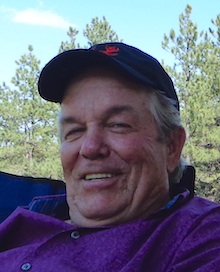Dakota Rural Action's stance on the Keystone XL pipeline has evolved from an initial careful accommodation, seeking the safest pipeline and fairest deals possible for landowners, to the current call to stop to the tar sands pipeline.

DRA Board Chairman Paul Seamans has undergone a similar evolution in his thinking. He grows hay in Jones County, south of Draper. When TransCanada first contacted him in 2008, he didn't think the proposed pipeline would be a big deal, but he expected better treatment. In their first substantive contact, TransCanada made it what called its best, non-negotiable offer, one that would only go down if Seamans didn't accept and forced TransCanada to invoke eminent domain.
Seamans didn't care to gamble on a lawyer and a judge. Eventually, unenthusiastically, Seamans signed the easement that would allow TransCanada to lay its 36-inch, 830,000-barrel-per-day tar sands pipeline across his property.
But then in November 2011, President Barack Obama issued his first delay of the project. That delay and the subsequent delay last April have bought folks like Seamans time to learn more about the pipeline and the oil it will carry and to realize fighting TransCanada may not be futile. Those delays have caused the expiration of the permit TransCanada received from the South Dakota Public Utilities Commission, opening the door to what PU Commissioner Gary Hanson indicated last spring would likely be "protracted hearings"—read, hearings where Seamans, other landowners, and allies from national organizations like 350.org can raise all sorts of heck.
Among his most important allies, says Seamans, are the tribes. Seamans says an important moment in the evolution of his thinking came in a meeting with indigenous folks from Canada who came to explain the harm done in Alberta by tar sands extraction. Seamans says he and fellow landowners hadn't interacted much with tribes of any sort, local or foreign, before they found this common issue. Seamans says he was struck in his very first meeting with tribal allies by the ironic realization that now he and his white neighbors are the ones being forced to surrender their land to foreign invaders. Now you know how we feel echoes in the words of every tribal ally to whom Seamans speaks about Keystone XL.
Seamans is optimistic that he, the tribes, and other grassroots allies can beat a fifty-billion-dollar corporation. I'm optimistic that these new alliances will build some white-Indian trust that will translate into recognition of common ground and cooperation on more South Dakota issues.

Another outstanding interview, Cory. Expect this pipeline mission to change to Bakken crude from tarsands bitumen.
http://www.blackhillsfox.com/news/headlines/Oil-pipeline-opponents-plan-concert-in-cornfield-271751251.html